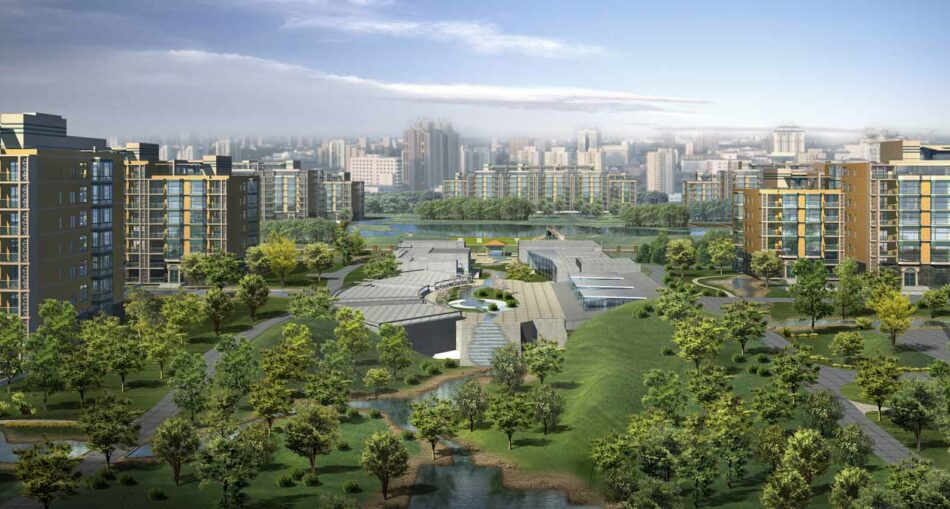Lahore smart city: The Master Plan
Lahore, the capital of Punjab province, is one of the fastest-growing cities in Pakistan. With a population of over 8 million people, it’s no wonder that Lahore is struggling with infrastructure and transportation issues. To help address these problems, the city government has released a comprehensive Lahore smart city master plan that details everything from transportation to urban planning. This plan not only lays out a blueprint for the future of Lahore, but also provides guidance on how to make it a thriving city that meets the needs of its citizens. If you’re interested in learning more about this plan or how it could impact your business, read on.
Background
Lahore, the cultural capital of Pakistan, is fast emerging as one of the most advanced and hi-tech cities in the world. The city has been designated as a ‘smart city’ by the government and is currently undergoing a massive urban redevelopment programme.
The project, which is expected to be completed in phases over a period of ten years, envisages transforming Lahore into a modern and livable city with all essential infrastructure facilities. The first phase of the project involves establishment of an Integrated Transport Management System (ITMS) for managing traffic and parking in the city.
In addition, various other projects under the smart city scheme include installation of CCTV cameras across different areas of the city, development of renewable energy sources such as solar panels and wind turbines, installation of intelligent water management systems etc. Overall, this mission will help improve overall security and regulatory compliance in Lahore while promoting socio-economic development.
The Vision
Lahore, the capital of Punjab province in Pakistan is one of the fastest-growing cities in the country. As Lahore’s population continues to grow, so too does the city’s infrastructure need to keep up. To do this, Lahore has developed a Master Plan for its smart city initiative.
The Master Plan covers everything from transportation to healthcare and sanitation. The goal is to make Lahore an efficient and sustainable city that’s able to handle its growing population without sacrificing quality of life.
One of the key components of the Master Plan is intelligent infrastructure. This includes things like digital signage and streetlights that can be controlled remotely. It also includes installation of CCTV cameras throughout the city to help police monitor activity and protect citizens alike.
Another important part of the smart city initiative is energy efficiency. Lahore plans to use green technologies such as solar power and wind turbines to reduce its dependence on traditional sources of energy. This will not only save money on energy bills, but it will also help reduce emissions from Lahore’s many factories and businesses.
Overall, the Master Plan for Lahore’s smart city represents a fundamental shift in how cities are designed and managed in Pakistan. By using cutting-edge technology and Green initiatives, officials hope to create a more efficient, modern metropolis that remains safe and attractive for residents
The Implementation Plan
Lahore is the largest city in Pakistan and one of the most important economic hubs in the country. The city has seen rapid growth over the past few years, as it has become a center for business and trade. However, Lahore faces many challenges that need to be addressed if it is to continue to grow.
One of the major issues facing Lahore is its lack of infrastructure. The city lacks basic services such as clean water and reliable electricity, which can limit its potential as an economic hub. To address these problems, the Lahore smart city project was launched in 2016. The project aims to improve infrastructure and make Lahore more comfortable and sustainable for residents and businesses.
The project involves a number of different initiatives, including:
1) Construction of new roads and bridges: Improved infrastructure will allow more cars to flow through the city, which will increase traffic congestion and create safety concerns. New roads and bridges will help address this issue by increasing access to vital areas while reducing congestion.
2) Development of green infrastructure: One of the key goals of the smart city project is to improve environmental quality in Lahore. This includes construction of green spaces, clean water systems, and improved energy efficiency measures.
3) Creation of digital infrastructure: Developing digital technology in Lahore will help increase accessibility for residents and businesses alike. This includes expanding broadband coverage, developing new apps and software, and installing surveillance cameras throughout the city.
Key Initiatives
Lahore has been designated as the “First City of Pakistan” and is one of the most important cities in the country. The city is poised for rapid development, but there are many challenges to be overcome. The Lahore Smart City Master Plan was developed to address these challenges and make the city more sustainable and livable.
The Master Plan focuses on six key initiatives: transportation, infrastructure, energy, environment, social inclusion, and governance. It includes a comprehensive plan for highways, transport facilities, urban planning and development, waste management, irrigation and water supply systems, education and health care facilities, and IT infrastructure.
The transportation initiative focuses on improving access to vital services and improving public safety. It includes plans for new roadways and bridges as well as expansion of metro lines. The infrastructure initiative aims to improve sanitation systems, expand telecommunications networks, build new hospitals and universities, upgrade airports and seaports, develop green spaces, and create new employment opportunities.
The energy initiative focuses on developing renewable sources of energy such as solar power and wind turbines. It also aims to improve efficiency in current energy usage by upgrading streetlights and building new thermal power plants. The environment initiative focuses on conserving land resources while mitigating environmental impacts of development projects. It includes plans for rain gardens, green roofss, wetlands restoration projects, tree planting programs and green open spaces



